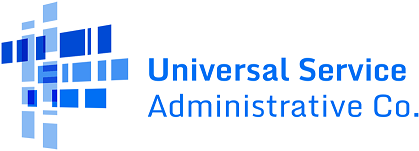Step 4: Start Services
In general, discounted equipment/services for a particular funding year cannot be received before July 1 of that year. Services that continue from one year to the next under a multi-year contract are considered to start again in the new funding year because they receive a new Funding Request Number (FRN) for that year.
There are two exceptions to the July 1 start date. Certain Category One components can be installed beginning January 1 if certain conditions are met and the components are needed to provide recurring services starting July 1, and Category Two services can be installed as early as April 1.
Talk With Your Customers
In advance of the start of services, you and the applicants receiving your services should discuss the details of those services. Review the terms of your contract with them and work with applicants to understand which invoicing method they have selected for the requested equipment/services.
Start Services
You can start providing services before USAC has issued a Funding Commitment Decision Letter (FCDL). The FCDL is issued to you and the applicant in the E-Rate Productivity Center (EPC) and includes details of funding commitments for the services requested. USAC does not issue an FCDL until its review is complete; that review may result in funding being reduced or denied. You can subscribe to receive FCDL information electronically.
FCC Form 486
After an FCDL is issued and services have started, applicants must file an FCC Form 486. The FCC Form 486 informs USAC that:
- Services approved for funding have started and invoicing can begin. Applicants can file the FCC Form 486 before services start if they have received an FCDL, the applicant has agreed with you that services will start in July, and they can accurately provide all of the certifications on the form.
- The applicant (or recipient of service) is compliant with the Children’s Internet Protection Act (CIPA) requirements. If funding requests are only for telecommunications services and/or Interconnected Voice over Internet Protocol (VoIP) services, CIPA does not apply to these services.
These requirements are important to you because funding may be reduced or rescinded by USAC if an applicant is found to be noncompliant during all or part of a funding year.
FCC Form 486 Filing Deadline
The FCC Form 486 must be certified no later than 120 days after the service start date or 120 days after the date of the FCDL, whichever is later. Filing this form late can result in a reduction in funding; the later the filing date, the greater the reduction.
FCC Form 486 Notification Letter
After USAC processes an FCC Form 486, USAC will issue an applicant version and a service provider version of an FCC Form 486 Notification Letter in EPC.
If USAC adjusts the service start date due to a compliance issue or a late-filed form, the service start date in the letter will be followed by an explanation of the reason for the adjustment. USAC will not provide funding for services delivered before the service start date.
Non-Recurring Services
Each funding year ends on June 30. Recurring services (e.g., monthly internet service) and fiber construction related services must be delivered on or before that date for the appropriate funding year. However, non-recurring non-fiber-related services (e.g., delivery and installation of equipment or installation of wiring) can occur through September 30.
The applicant can request a service delivery extension by filing an FCC Form 500 if additional time is needed and the FRN was not automatically extended by USAC. This form must be filed on or before the service delivery deadline.
Next Step
After USAC has processed the FCC Form 486, you have begun providing the approved equipment/services, and the applicant has paid its non-discounted share of costs, you or the applicant can invoice USAC for the discounted costs for those services.
